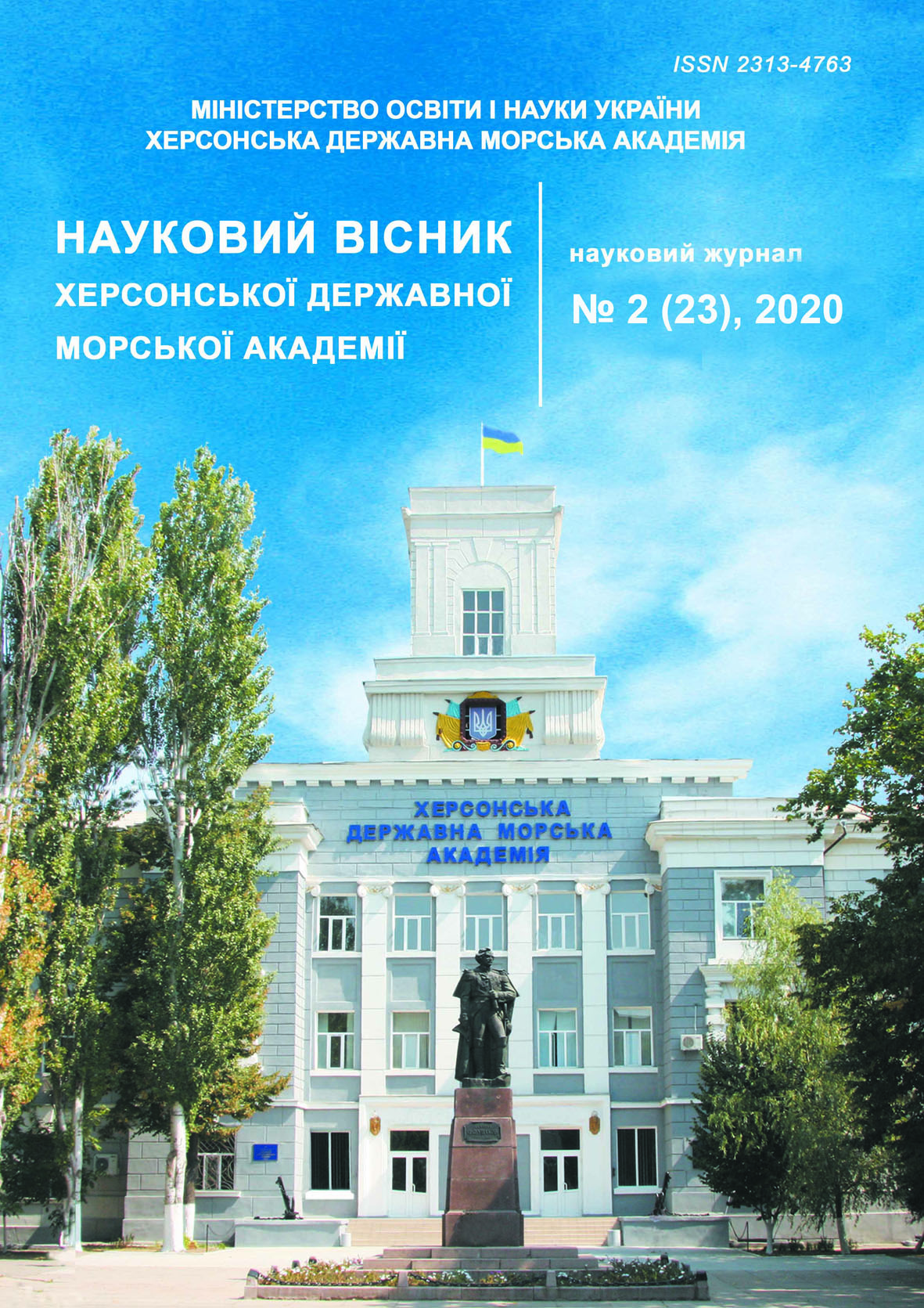OPTIMIZATION IN PLACE OF INGREDIENTS IN THE FORMULATION OF NEW APPLICATIONS FOR INCREASING THE RESOURCE OF ROBOTS AND TRANSPORT VEHICLES
Abstract
The necessity of using polymer composites in the production and repair of parts and objects in various industries, including water transport, has been substantiated. This is due to the significant intensity of the volume of cargo transportation, an increase in the load conditions of vehicles, as well as their operation under the influence of aggressive media. At the same time, new requirements are being put forward for improving the indicators of resource saving of vehicle parts and reducing the time of repair work. It has been proven that to improve the performance of epoxy composites, it is necessary to add additives of various physical and chemical nature to the binder at an optimal content. The work optimizes the content of dispersed particles of the synthesized powder titanium-aluminum mixture and discrete carbon fibers, which were introduced into the binder to improve the mechanical properties of epoxy materials. The aim of the work is to optimize the content of dispersed and fibrous discrete fillers for protective coatings of water transport using the method of mathematical planning of the experiment. Using the method of mathematical planning of the experiment, the optimal content of dispersed and fibrous discrete fillers has been established: powder titanium-aluminum mixture – 0.3...0.5 mass parts, discrete carbon fibers – 0.05 mass parts per 100 mass parts epoxy oligomer ED-20. The introduction of such ingredients into the epoxy binder makes it possible to increase the impact strength of epoxy composites up to W = 22.8...23.2 kJ/m2. It is analyzed that with an increase in the content of the powder titanium-aluminum mixture, it is possible to further increase the impact strength of materials. The results obtained make it possible to create materials with improved physical and mechanical properties in the complex. It is advisable to use the developed materials in the form of protective coatings to increase the service life and repair parts of transport equipment.
References
2. Sandler J., Shaffer M.S.P., Prasse T., Bauhofer W., Schulte K., Windle A.H. (1999). Development of a dispersion process for carbon nanotubes in an epoxy matrix and the resulting electrical properties. Polymer. V. 40, Issue 21. P. 5967–5971.
3. Buketov A., Maruschak P., Sapronov O., Zinchenko D., Yatsyuk V., Panin S. (2016). Enhancing performance characteristics of equipment of sea and river transport by using epoxy composites. Transport. Vol. 31 (3). P. 333–342.
4. Lihsenkov Eh. A., Leonova N. G., Zhiljcova S. V. (2019). Vliyanie kremniyjsoderzhatheyj fazih na ierarkhichnostj strukturih ehpoksidno-polisiloksanovihkh nanokompozitov. Teoreticheskaya i ehksperimentaljnaya khimiya. Vol. 55. № 4. P. 226–233.
5. Lysenkov Е. А. (2019). Simulation of thermal conductivity of polymer nanocomposites, using models based on thermal-electrical analogy. Nanosistemi, Nanomateriali, Nanotehnologii. Vol. 17, № 4. P. 761–772.
6. Zhyltsova, S.V., Leonova, N.G. & Lysenkov, E.A. (2020). Effect of Epoxy Oligomer on the Hierarchical Structure of Silica Nanoparticles Formed in a Polymer Matrix. Theoretical and Experimental Chemistry. V. 56. P. 275–282.
7. Buketov A., Yakushchenko S., Menou Abdellah, Bezbakh O., Vrublevskyi R., Kalba Y., Cherniavska T., Zhytnyk D., Danylyuk O. (2021). Оptimization of ingredients upon development of the protective polymeric composite coatings for the river and sea transport. Mechanical Engineering in Transport. № 2. B89–B96.
8. Bondarj A. G., Statyukha G. A. (1976). Planirovanie ehksperimenta v khimicheskoyj tekhnologii (osnovne polozhenie, primerih i zadachi) : uchebn. [dlya stud. vihssh.ucheb.zaved.]. Kiev : Vitha shkola.
9. Grushko I. M., Popov V. V. i dr. (1989). Osnovih nauchnihkh issledovaniyj: uchebnik dlya tekhnicheskikh vuzov / pod red. V.I.Krutova, V.V. Popova. Moskva : Vihsshaya shkola.
10. Matematicheskie metodih planirovaniya ehksperimenta (1981). / pod red. Penenko V.V. Novosibirsk : Nauka.






